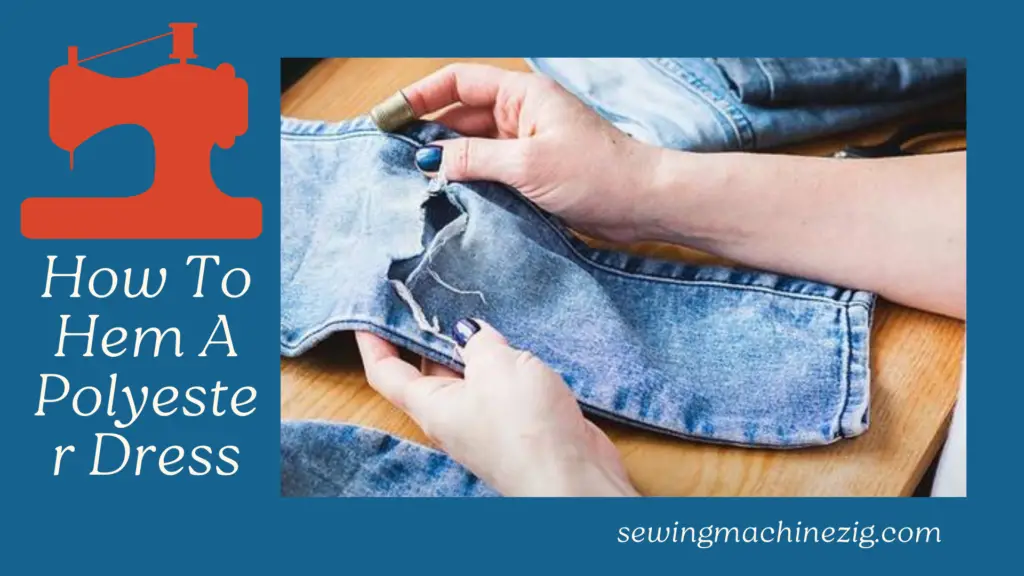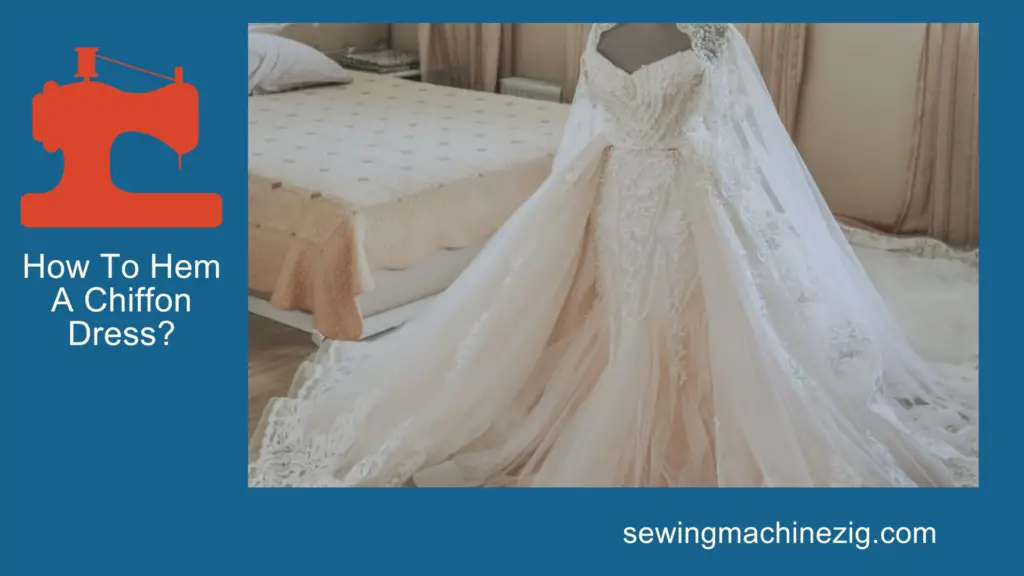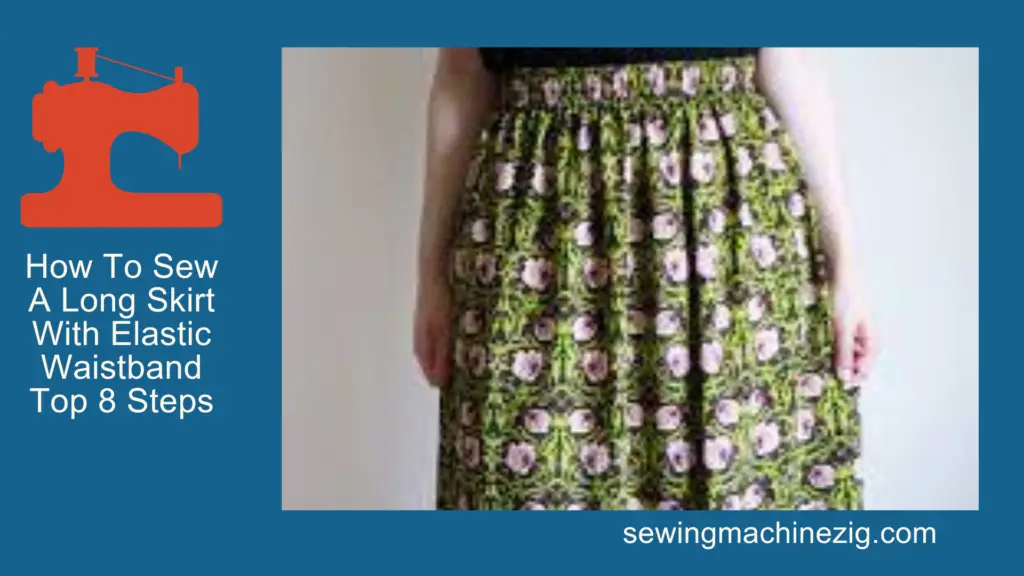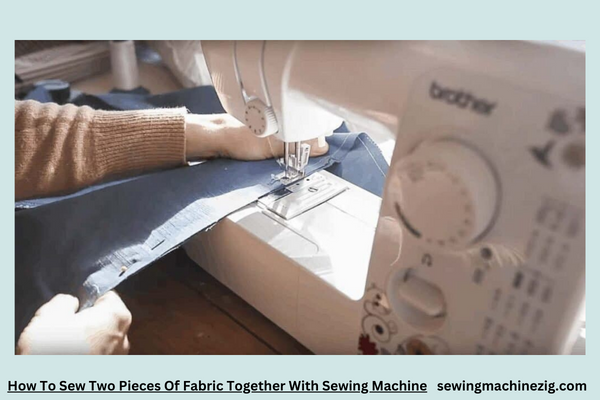
Embarking on the journey of stitching fabrics together with a sewing machine can be both rewarding and a tad perplexing, especially for beginners. The delicate art of seamlessly joining two pieces of fabric involves a harmonious blend of technique and precision.
In this guide, we unravel the intricacies of the process, offering insights that extend beyond the conventional. Whether you’re a novice or a seasoned seamstress, mastering ” How To Sew Two Pieces Of Fabric Together With Sewing Machine” opens a gateway to creativity, where every stitch weaves a tale of craftsmanship and skill.
How To Sew Two Pieces Of Fabric Together With Sewing Machine Detailed Answer
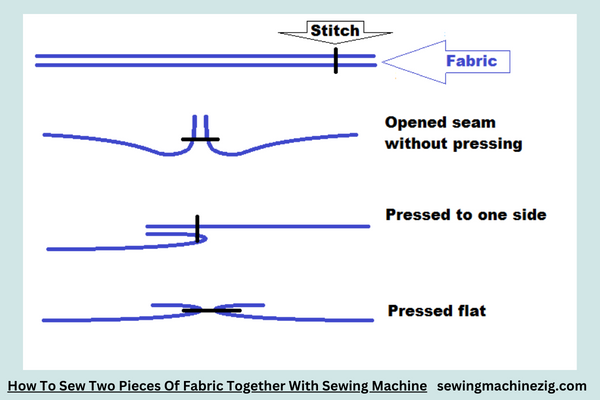
Sewing two pieces of fabric together with a sewing machine is a fundamental skill in the realm of crafting and garment creation.
Follow this detailed step-by-step guide, “How To Sew Two Pieces Of Fabric Together With Sewing Machine” to seamlessly join fabrics, creating sturdy and professional-looking seams.
Materials Needed:
- Two pieces of fabric
- Sewing machine
- Matching thread
- Sewing pins
- Fabric scissors
- Iron
Step 1: Prepare Your Fabric:
Begin by laying out the two pieces of fabric you intend to sew together. Ensure they are clean, well-pressed, and cut to the desired size.
Step 2: Choose the Right Stitch and Thread:
Select a straight stitch on your sewing machine, suitable for basic fabric joining. Use a thread color that matches your fabric to create a cohesive look.
Step 3: Align the Fabric:
Place the two fabric pieces together, aligning the edges you intend to sew. Use sewing pins to secure them in place, ensuring they stay aligned during stitching.
Step 4: Set Up Your Sewing Machine:
Thread your sewing machine, following the manufacturer’s instructions. Make sure the bobbin is properly loaded and the machine is set to the straight stitch setting.
Step 5: Stitch a Test Seam:
Before sewing the entire length, do a test seam on a scrap piece of fabric to ensure the machine is set up correctly, and the stitch looks even.
Step 6: Begin Sewing:
Start sewing at the beginning of your fabric, removing pins as you go. Keep a steady pace, guiding the fabric to ensure a straight seam.
Step 7: Backstitch at the Beginning and End:
At the beginning and end of your seam, backstitch a few stitches to secure the thread and prevent unraveling.
Step 8: Press the Seam:
After sewing, press the seam open with an iron. This step sets the stitches and gives your project a polished look.
Step 9: Inspect the Seam:
Check the seam for any missed stitches or irregularities. If necessary, make corrections with additional stitching.
Step 10: Finish the Raw Edges (Optional):
To prevent fraying, you can finish the raw edges of your seam with a serger or a zigzag stitch on the sewing machine.
Step 11: Repeat for Additional Seams:
If your project involves multiple seams, repeat the process for each, ensuring consistency throughout.
Mastering the art of sewing two pieces of fabric together with a sewing machine is a rewarding skill that opens doors to countless creative possibilities. Follow these steps diligently, and soon you’ll be crafting beautiful, durable seams with confidence.
Remember, practice makes perfect, so don’t hesitate to experiment and refine your technique over time. Happy sewing!
What Is The Best Stitch For Sewing Two Pieces Of Fabric Together?
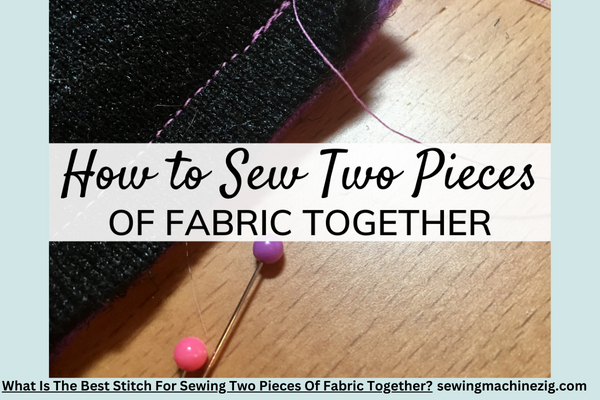
Let’s delve into the details of why the straight stitch is often considered the best choice for sewing two pieces of fabric together:
Characteristics of the Straight Stitch:
Simplicity and Versatility:
- The straight stitch is the most basic and fundamental stitch used in sewing. It involves the sewing machine creating a straight line of stitches by moving forward in a single direction. This simplicity makes it versatile and suitable for various sewing applications.
Strength and Stability:
- The straight stitch offers excellent strength and stability to the seam. When sewing two pieces of fabric together, especially in garment construction, you want a stitch that can withstand everyday wear and tear. The straight stitch provides a robust connection between fabric layers.
Clean and Neat Appearance:
- One of the key advantages of the straight stitch is its ability to produce a clean and neat appearance. The stitches align perfectly in a row, creating a professional finish that is aesthetically pleasing.
Seam Accuracy:
- The straight stitch is ideal for achieving precise seams. Whether you are sewing together woven or knit fabrics, the straight stitch ensures accuracy in joining the edges without unnecessary puckering or stretching.
Common Applications:
- This stitch is commonly used for constructing garment seams, hemming, attaching patches, and various sewing projects. It’s the go-to stitch for creating a foundational connection between two pieces of fabric.
Tips for Using the Straight Stitch:
Stitch Length Adjustment:
- Depending on the fabric type and project, adjust the stitch length on your sewing machine. Smaller stitches provide greater strength, while longer stitches are suitable for lighter fabrics.
Backstitching for Reinforcement:
- Always start and end your straight stitch with a few back stitches. This technique locks the stitches in place, preventing unraveling and adding extra strength to the seam.
Pinning and Alignment:
- Use sewing pins to align the fabric pieces before sewing. Proper alignment ensures that the straight stitch follows the intended seam line accurately.
Testing on Scrap Fabric:
- Before sewing the actual project, do a test run on scrap fabric. This helps you adjust the machine settings and ensures that the straight stitch looks and performs as desired.
In summary, in” How To Sew Two Pieces Of Fabric Together With Sewing Machine” the straight stitch is a sewing essential known for its strength, simplicity, and clean appearance. When sewing two pieces of fabric together, choosing the straight stitch provides a reliable and durable connection, making it a staple in the sewing repertoire.
Conclusion
In conclusion, mastering the art of sewing two pieces of fabric together with a sewing machine opens a world of creative possibilities. Whether you’re a novice or an experienced seamstress, the keyword “How To Sew Two Pieces Of Fabric Together With Sewing Machine” signifies a foundational skill.
With precision and patience, the sewing machine becomes a powerful tool, transforming fabric into personalized creations. So, embrace the joy of stitching, and let your imagination run wild as you bring together the threads of craftsmanship and creativity. Happy sewing!
FAQS
Q1: What type of stitch is best for sewing two pieces of fabric together with a sewing machine?
A1: The best stitch for joining two pieces of fabric on a sewing machine is the straight stitch. This simple and versatile stitch provides a strong and secure seam, making it ideal for basic fabric joining.
Q2: Can I use a zigzag stitch instead of a straight stitch for sewing two pieces of fabric together?
A2: While a zigzag stitch can be used for certain applications, it is not typically recommended for joining two fabric pieces. The straight stitch is more secure and offers better stability for this purpose. “How To Sew Two Pieces Of Fabric Together With Sewing Machine“
Q3: How do I prevent fraying when sewing two fabric pieces together?
A3: To prevent fraying, use a straight stitch close to the fabric edge. You can also consider finishing the raw edges with an overlock or zigzag stitch to add extra reinforcement and durability.
Q4: Should I backstitch when sewing two pieces of fabric together with a sewing machine?
A4: Yes, it’s essential to backstitch at the beginning and end of your seam when sewing two pieces of fabric together. This reinforces the stitches, preventing them from unraveling over time.
Q5: Can I sew different types of fabric together with a sewing machine?
A5: Yes, a sewing machine is versatile and can handle different fabric types. Adjust the needle, thread, and machine settings based on the fabrics you are joining to ensure a smooth sewing process. “How To Sew Two Pieces Of Fabric Together With Sewing Machine“
Q6: What is the recommended seam allowance for sewing two pieces of fabric together?
A6: The standard seam allowance is typically 5/8 inch (1.5 cm), but it can vary depending on your project. Always check your sewing pattern or project instructions for specific seam allowance guidelines. “How To Sew Two Pieces Of Fabric Together With Sewing Machine“

